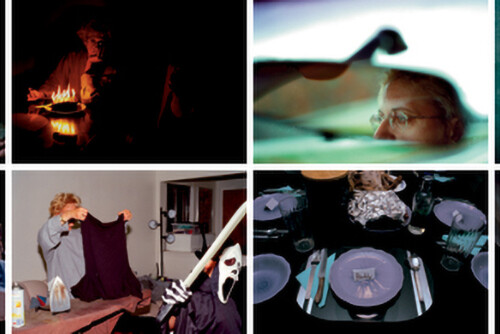I. Lucid Dreaming
Shortly before I was to leave the South Pole after a three-week residency to photograph “the liminal space between life support architecture and extreme environment,” as promised in my NSF Artists and Writers grant application, I was having one of my last meals in the galley. I was feeling sad that I had to leave the “off planet” space of the polar plateau and upset not to have had more time to work. As I pondered the hierarchies between scientific and creative research, one of the astronomers, an annual visitor to the Pole, joined me. A cosmologist, his power point presentation had been one of my favorites. Unlike any other of the science lectures I’d seen, his was illustrated with stills from Hollywood films. Knowing that I was destined as cargo on the next plane out of the Pole, he informed me, from his perch of experience, that the moment I left the continent, both the ice, as well as my time there, would seem like a dream.
However, the opposite became true. Almost four years later when I think back to Antarctica, especially the Pole, it still feels very real to me, strangely uncorrupted and unlike the way memories otherwise almost always become. Perhaps it’s because of the disparity between my photographic images and the visual memory of lived experience echoed, for example, in the discrepancy I experienced between the enhanced peripheral vision that physically occurs at the bottom of the world versus the limitations of a 19th century mechanical eye. This divergence in modes of seeing and image making, of course, is fodder for many theoretical treatises on photography. When framing images it’s necessary to understand that both the act of photographing as well as the reading of photographs is not solely (nor truly) optically based. From an artist’s end, the aesthetic negotiation of this myriad of semiotic, conceptual, and paradoxical elements is one of the most pleasurable parts of making work. But shortly after arriving at the Pole, work ceased to be fun, as I realized that I had to seriously revise my pre-conceived plans—a phenomenon common to many artistic endeavors dependent on “place”—causing the pleasure of creative play to evaporate those first few days along side my ability to breathe in the extreme altitude.
As my body molecularly adjusted to the extreme environment and the cowboy culture of ice adventure, I found that everything—landscape, structures, people—became rapidly mundane. In retrospect, I now realize that this adjustment was both an artistic realignment as well as a necessary element of survival. Without question, it is impossible not (nor is it a bad thing) to be emotionally and visually overcome by the force and expanse of the Antarctic landscape even when one is conscious of the many pitfalls perilously situated beneath the lure of the exotic and the imaginary. However, it was not until I shifted over to a quotidian vantage point (alongside a state of awe) that I was able to start thinking photographically, and by this I mean the ability to observe political geographies and psychological dislocation in the everyday.
As many critics have pointed out over the years, in cultures like ours, so deeply immersed in mediascapes, our idea of reality is often photographically pre-determined. For example, tourists generally have in mind what they want their pictures to look like before they arrive to a place they have never been before. Although only about 10,000 people have been to the South Pole since it was first explored, per capita it may be more photographed than Disney World. I did not encounter one person, support personnel or researchers, who did not have a camera. Once my identity was established (“it’s the photographer”), many people with whom I talked had definite ideas of what I should be photographing. When not being schooled, I would stand in fascination sipping tea, looking out the galley windows, watching others photograph: NSF visitors with only a few days on site, National Geographic/Discovery Channel film crews with only a week’s time, struggling against the (unseasonably cold) -78°F, trying to negotiate the rickety surface of the ice while simultaneously vacuuming the landscape with video cams and digital SLRs for recognizable icons and dramatic narratives.
During this idle beginning to my residency—where loss of creative play was compounded by my natural lack of heroic impulse—I found myself plagued by the same dream for several nights running. I would dream I was in the military, an outer space combat unit but not with the glamorous plots and casts of the SciFi Channel’s more popular programs. Since I was the lowest on the pecking order, my commanding officer would nightly bark at me: “Samaras, suit up, get out there, and set up our space tents!” Grinding my teeth as I looked out of the ship’s protective bubble, I would reluctantly put on my gear because, if I didn’t, insubordination would result in certain death. Once outside, danger mixed with abstraction and I was overcome by a myriad of colors. White, though, was nowhere to be seen. However, when my talent returned in real life and I got down to making images, my unconscious supplanted this dream with one of grizzly people on prison work crews, somewhere on an unidentifiable planet in a far future, endlessly patching and pounding the walls of freezing corridors.




